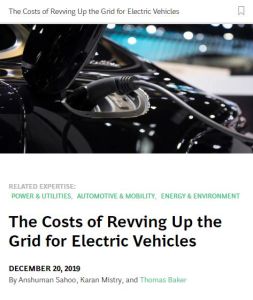
Recommendation
Electric vehicles (EVs) are surging. New estimates predict that by 2030, EVs will overtake internal combustion–powered vehicles in market share. And battery-powered and plug-in hybrids will account for half those sales. To meet the demand of millions of new EVs hitting the road, utilities will need to boost their capacity, and ratepayers will shoulder most of the cost. To help utilities and policy makers in planning for grid capacity upgrades and expansions, Boston Consulting Group project leader Anshuman Sahoo, principal Karan Mistry, and managing director and partner Thomas Baker modeled power demand and rate impacts for various scenarios of EV penetration and charging behavior. Utility executives and policy makers will appreciate this informative white paper.
Summary
About the Authors
Anshuman Sahoo is a project leader in Boston Consulting Group’s San Francisco Bay Area office. Karan Mistry is a principal in the Los Angeles office, and Thomas Baker is a managing director and partner in the San Francisco Bay Area office.







Comment on this summary